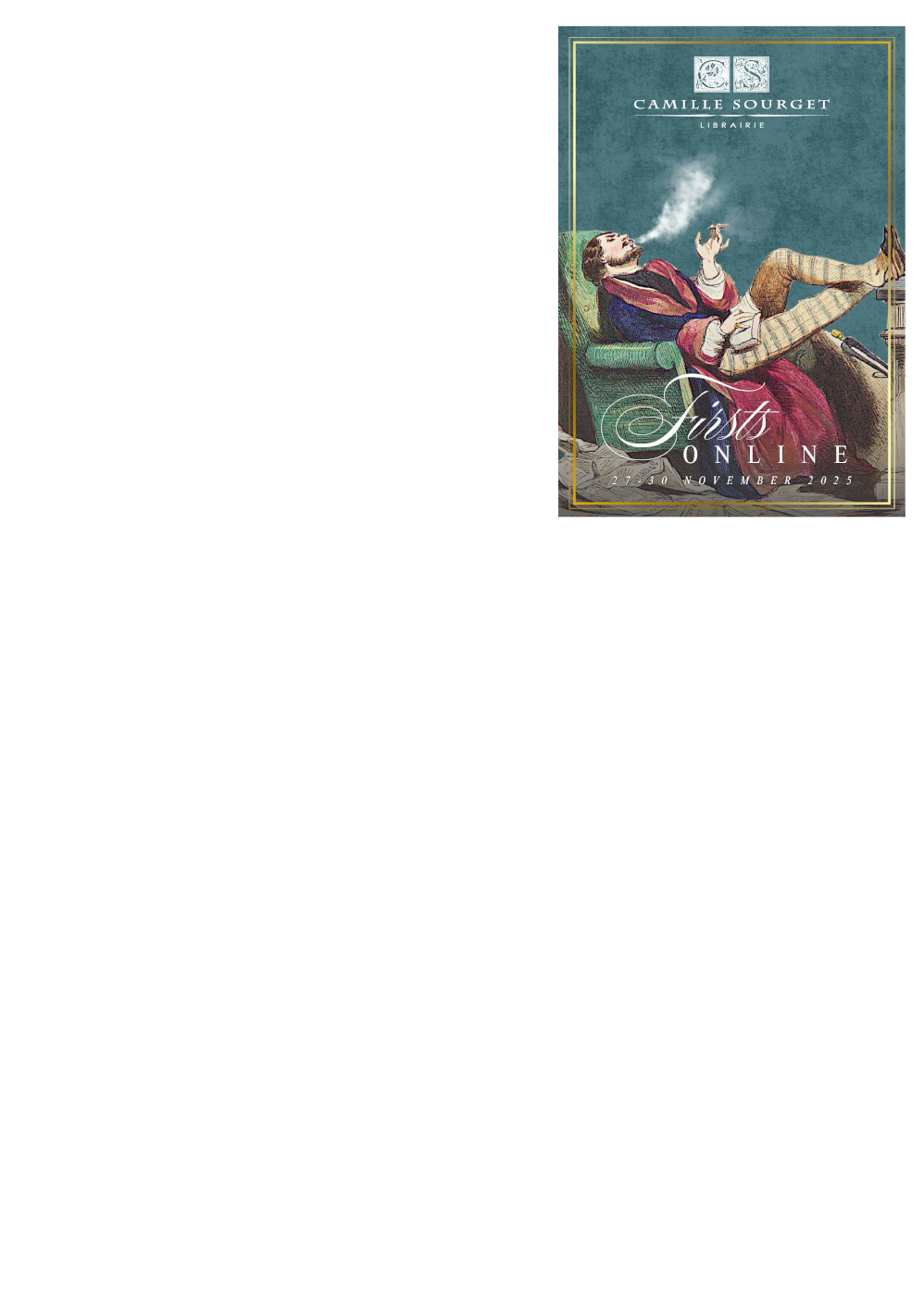Les articles de Smalkalde rédigés par Luther en 1536 en vue du concile de Mantoue.
“Schmalkaldic Articles are one of the confessions of faith of Lutheranism”.
Luther, M. Artickel so da hetten sollen aufs Concilion zu Mantua oder wo es würde seyn, überantwortet werden, von unsers teils wegen. Und was wir annemen oder geben Kündren oder nicht. Fr. M. Luther.
Wittemberg, durch H. Lufft, 1538.
In-4 de (32) ff. Demi-vélin, dos lisse, pièce de titre de maroquin brun en long. Reliure du XXe siècle.
191 x 151 mm.
Rare édition originale des « articles de Smalkalde » rédigés par Luther en 1536 et qui offrent une synthèse de sa doctrine.
Graesse, Trésor de livres rares, 306.
Les attaques de Luther contre la papauté sont réitérés et virulents. En 1535, de guerre lasse, le pape Paul III propose de réunir un concile. Les protestants de la ligue de Smalkalde réunis en assemblée posent quand même des exigences pour y participer. Ce concile est convoqué à Mantoue pour le mois de mai 1537. Aussitôt Luther compose ce qu’on dénommera plus tard les articles de Smalkalde où il expose les points essentiels de sa doctrine. Le concile sera reporté et n’aura lieu qu’en 1545 dans la ville de Trente.
« In 1534 Alessandro Farnese was elected as Pope Paul III with a clear message of internal church reform. To further this mission and to respond to the rise of Protestantism, he called for an ecumenical church council to meet at the Italian city of Mantua in 1537. Given the importance of this council for Christian unity and the future of reformed forms of worship, the elector of Saxony asked Luther to prepare an official statement of doctrine that would both represent his views and indicate where negociation might be possible. Luther agreed, and, with some imput from his Wittenberg colleagues, carefully laid out what he saw as the central pillars of Christian teaching. Yet these doctrinal statements, or articles, were never presented at the council – which was delayed a number of times, finally meeting in Trent beginning in 1545. Instead, they were discussed at a general meeting of the Protestant Schmalkaldic League, although even here the collected princes and theologians declined to affirm them, due mostly to concerns that they were too exclusionary and divisive, especially the statements on the Eucharist and papacy. Luther then published the articles in 1538, adding a preface but leaving their structure and content otherwise intact… As these articles offered a clear and comprehensive summary of Luther’s doctrine, they would be extremely important as a Lutheran confession of faith, and in 1580 would be incorporated into the authoritative collection of fundamental Lutheran documents known as the ‘Book of Concord’…” (The Essential Luther, 23).
“Schmalkaldic Articles are one of the confessions of faith of Lutheranism, written by Martin Luther in 1536. The articles were prepared as the result of a bull issued by Pope Paul III calling for a general council of the Roman Catholic Church to deal with the Reformation movement. (The council was actually postponed several times until it met in Trent in 1545.) John Frederick I, Lutheran elector of Saxony, wished to determine what issues could be negotiated with the Roman Catholics and what could not be compromised. He asked Luther to review earlier statements of faith by the reformers to determine what was absolutely essential to the faith. After Luther prepared the articles, he invited several reformers to Wittenberg to discuss them, and after some minor changes eight theologians signed them. They were then sent to the elector in January 1537.
In February 1537 the Protestant secular heads of state who were members of the Schmalkaldic League met with several theologians at Schmalkalden to decide how to deal with a council of the Roman Catholic Church. Luther became ill and could not attend, but John Frederick I presented Luther’s articles to the gathering. Because of Luther’s somewhat controversial doctrine of the Lord’s Supper, Philipp Melanchthon urged that the Augsburg Confession and its Apology, previously presented to Emperor Charles V, adequately presented the reformer’s faith and that additional statements should not be added. This decision was adopted, and the Schmalkaldic Articles were not officially accepted. They were, however, circulated and read, and 44 theologians signed them as an expression of their personal faith. Subsequently they were included in the Book of Concord (1580).
The Schmalkaldic Articles are divided into three sections. The first discusses the unity of God, the Trinity, the Incarnation, and Christ, and on these subjects Luther believed there was no real controversy between Roman Catholics and Protestants. The second section dealt with Christ and justification by faith. According to Luther, “On this article rests all that we teach and practice against the pope, the devil, and the world.” This section also discusses the mass, monastic orders, and the papacy. The third section discusses 15 articles that could be considered by Roman Catholics and Protestants. It includes such subjects as sin, the Law, repentance, the sacraments, confession, the ministry, and a definition of the church”.

